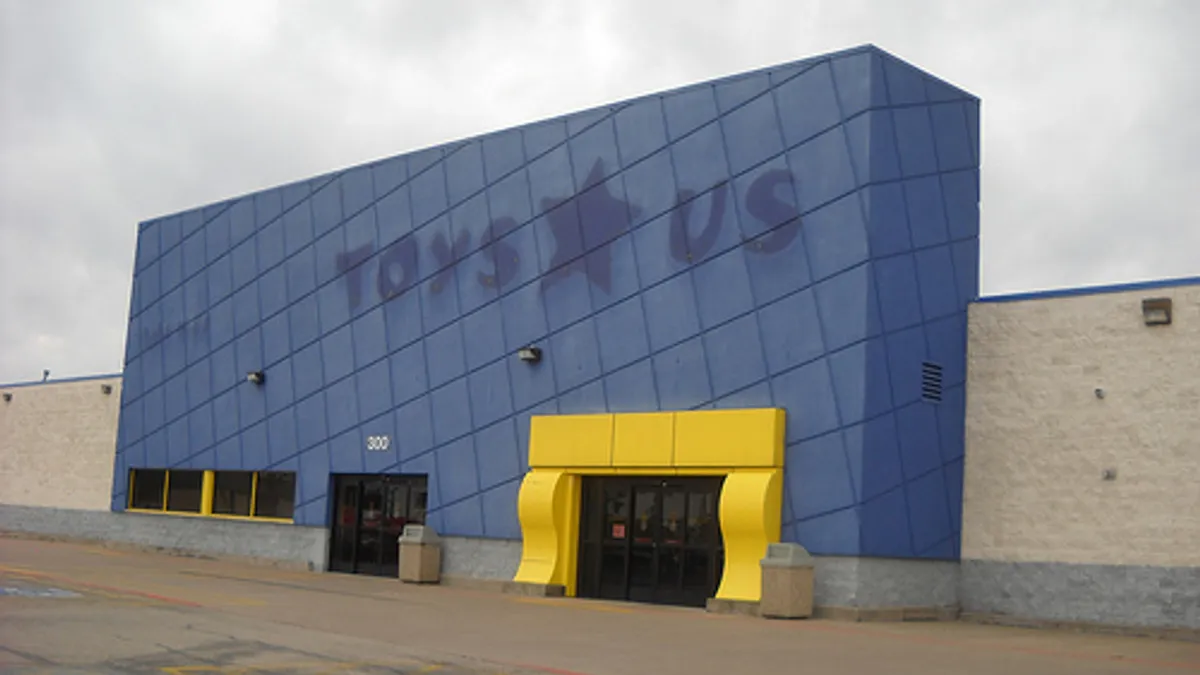Dive Brief:
-
The "retail apocalypse" headlines of last year (and continuing this year despite healthy holiday retail sales) were driven primarily by store closures; major U.S. chains announced 6,955 store closures in 2017, according to a report from consulting firm FGRT emailed to Retail Dive. Factoring in small and independent retailers, the total U.S. store number last year fell for the first time since 2009, according to the report, citing statistics from Euromonitor International.
-
That decline was driven in large part by the struggles at apparel retailers and regional malls (which are themselves skewed toward apparel), which have led such malls to expand their tenancies to grocery and "everyday goods" retailers and to mixed uses like leisure and entertainment, according to FGRT's report.
-
But the collapse is also somewhat exaggerated, with many retailers, notably grocery and dollar stores, actually expanding their physical footprints; major retailers opened a net 1,785 stores, boosting off-mall centers like strip malls, FGRT said. Plus, super-regional malls, which are leisure as well as retail destinations, "registered solid occupancy rates across 2017 despite the impact of retail bankruptcies," FGRT said.
Dive Insight:
It's hard not to contemplate the obituary for brick-and-mortar retail in light of the many bankruptcies and store closures in the U.S., which seemed to reach a peak last year. Department stores, notably Macy's, Sears and J.C. Penney, last year scaled back physical operations and shuttered stores, while a slew of specialty retailers, including J.Crew, The Limited and Toys R Us, reorganized their debt loads and some landed in bankruptcy court.
Distressed bond issuers in the U.S. retail and apparel markets are nearing recession levels, tripling in the past six years, according to a report released by Moody's Investors Service. A significant 13.5% of Moody's retail and apparel portfolio is distressed, compared to 16% during the Great Recession, according to that report. Debt maturities are also headed toward record levels over the next five years and retailers are filing for bankruptcy at a record rate.
U.S. store closures approached 7,000 last year, according to various research. That breaks a 20-year record, according to Kleiner Perkins Caulfield & Byers General Partner Mary Meeker's June trends report. Closure announcements in 2017 increased 229% year over year to some 6,985, according to an earlier FGRT report sent to Retail Dive.
But the contraction is in large part a correction of retail over-building the past few decades, rather than a sign of failure. Furthermore, physical retail sales are continuing to grow, if through fewer locations. In fact, FGRT found that total physical store sales were up by some 2.5% last year, and average in-store sales growth is poised to accelerate in 2018, according to FGRT Managing Director Deborah Weinswig, author of the report. Average sales per store and average sales per square foot across U.S. retail also rose last year, she said.
At the end of 2017's third quarter, four of the top five owners of U.S. retail real estate (measured by gross leasable area) had seen a year-over-year decline in occupancy rate. But Weinswig deems those declines "marginal," especially in the light of the many bankruptcies.
The spate of bankruptcies and closures has mostly been explained by the rise of e-commerce, but that is also an exaggeration, other observers insist. "E-commerce is the most recent detractor in brick-and-mortar retail, but by no means the most important," retail analyst Nick Egelanian, president of retail development consultants SiteWorks International, told Retail Dive in an email.













